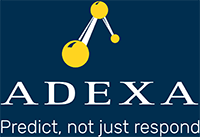Time to Remove Silos from the Vertical Supply Chain
Most supply chain practitioners believe that there is a need for both a long-term planning engine (S&OP) and yet another for plan execution (S&OE). The main reason is that S&OP can only provide a rough plan which is not good enough for execution for (say) this week or this month. But, if you were to have one system that generates accurate plans, both long term and short term, i.e., plans that are realistic for execution, then why would you need to have two separate processes and systems for S&OP and S&OE. How would I get long term visibility, you might ask?
Think of S&OE as an accurate version of S&OP, an evolved version of S&OP or simply as a perfection of S&OP. You can get both short term and long-term plans within S&OE with more accuracy and more reliability because it has a more accurate model of the supply chain. This realistic model is called the Digital Twin of your supply chain.
Having one system that performs both planning and execution removes the need for multiple business processes and multiple meetings for S&OP and S&OE. People have been talking for decades about getting rid of silos between horizontal processes of demand, sales and supply. We are now at a point to get rid of “vertical silos” between planning and execution, merged as one. Note that, it is not integrating the two together. Integration is between two separate systems. Here we are talking about a continuum. The two are one! This is done via one extensible model that we refer to as a unified data model (UDM). With UDM, you just need to add data to go from high level planning to lowest level of execution. No changes or additions of systems, no additional models and no need for integration. The more data you add, the more of a digital twin you will have, the more granularity you add the more digital your supply chain would be; and the more data you add the more autonomous you will be operating.
Consider a very simple task of crossing a street. You can plan this event days in advance (not that you need to) if you had an accurate model of the street and the number of cars at any point in time and other factors. The more data you have the more accurately you can predict the best timing to cross the street. However, as you get closer conditions may change. For example, it may rain just before you are about to cross the street. Then the system would make adjustments as needed continuously to ensure safe crossing of the street. At the same time, in the background the system is updating (learning) the actual digital twin of the street on an on-going basis to ensure the model is up-to-date and plans are generated accurately. In UDM, we plan the supply chain as accurately as we can, given the available data. As we get closer, events might occur that cause changes in the plan. The system is continuously monitoring these events to adjust the plan and also to remember the potential trends that are developing using ML techniques. For example, a supplier may make late deliveries in winter by a week or so. Some argue that S&OP is good enough for visibility. That might be the case, however with an inaccurate model the visibility is rather foggy. Why not have a clear visibility in one system that keeps perfecting itself with data, and produces plans that are ready for execution, removing the need for mundane manual planning effort?

“S&OE is an accurate version of S&OP, an evolved version S&OP or simply a perfection of S&OP.”
For more information on UDM and merging planning and execution in one system click Here.


